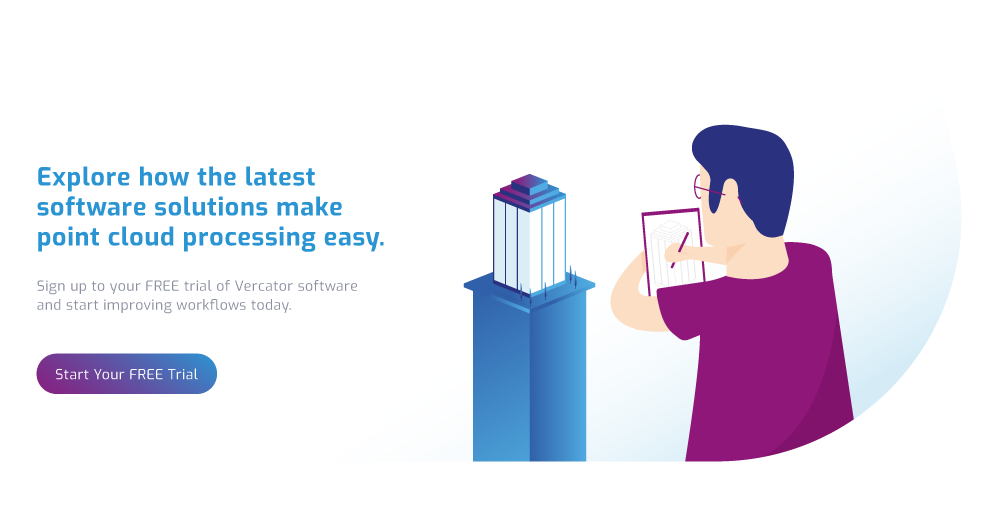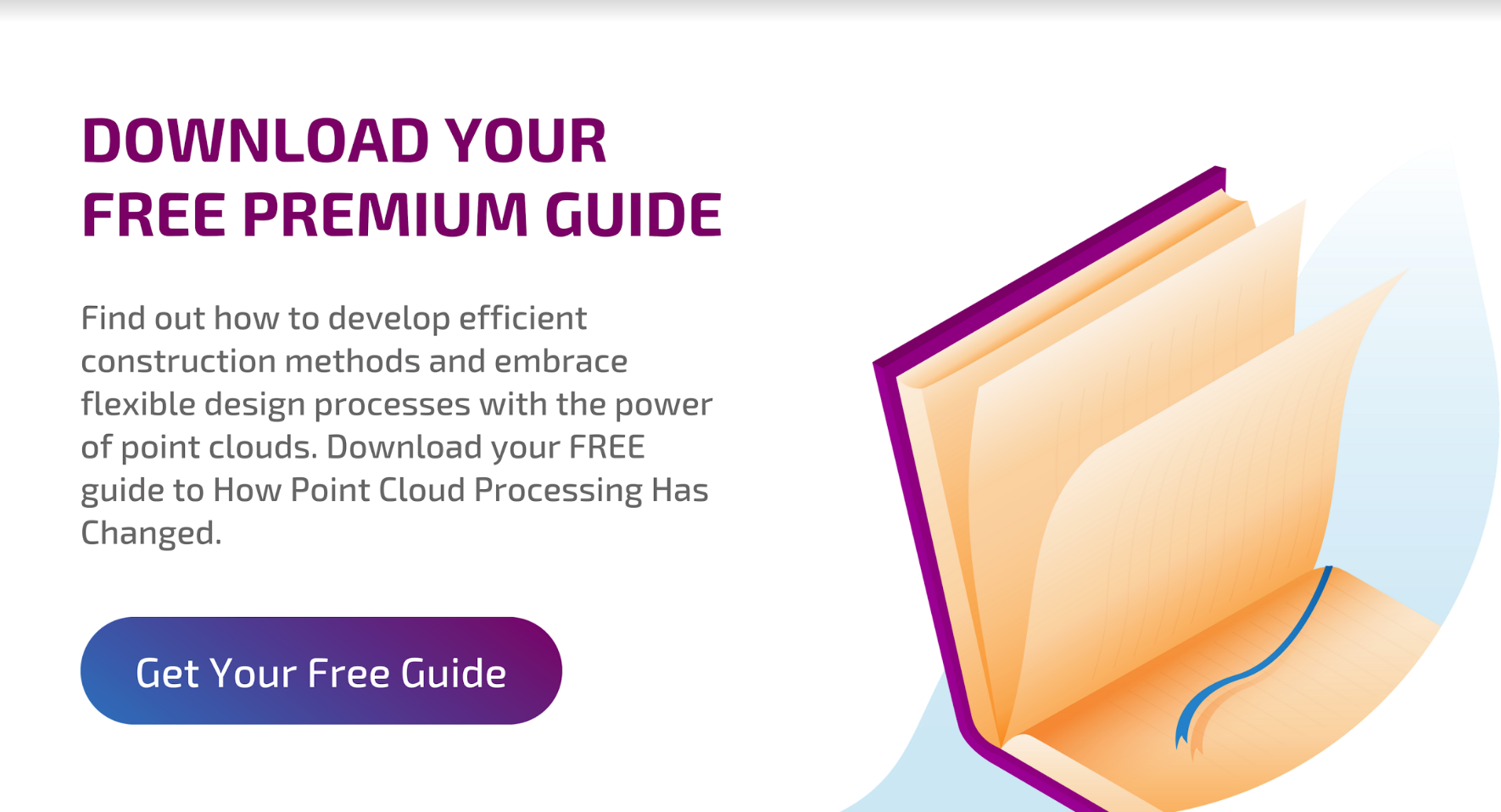Taking point clouds into the cloud: why cloud applications are poised to disrupt point cloud processing

Point clouds created by laser scans can store incredibly detailed information about physical space. However, the production of greater point cloud data will result in larger files that can become unwieldy to store and to process, particularly as projects grow in size.
Large projects can include hundreds (or even thousands) of scans, sometimes creating datasets in excess of a terabyte. This will put a strain on computer hardware, testing CPU and RAM, and can significantly increase the time it takes to process laser scan data.
Dealing with datasets of this size is an increasing problem for those working with point clouds. Processing data in the cloud offers the potential to handle incredibly large datasets, and potentially process an infinite number of tasks all at once. But, it all depends on how “user-friendly” the point cloud processing software is.
The benefits of moving to the cloud
The cloud is potentially the solution to processing the largest point cloud datasets at speed. Theoretically, the cloud offers infinite processing power. But there are also practicalities involved in exploiting that power.
Scalability
The cloud will allow a surveyor to easily apply more powerful processing as required. For example, most cloud services can increase existing resources to accommodate increased business needs or changes. You will be able to support your business growth without constantly having to buy new hardware or update your existing IT infrastructure.
Cloud services have both the processing memory (RAM) and disk storage to handle very large amounts of data. Terabytes of RAM and petabytes of storage can be made available to cope with the inevitable increase in both the use and size of point clouds.
To take advantage of cloud computing, processing software must be capable of integrating with the cloud. You might also need to invest in a high-quality connection to the internet and ensure there is no data transfer cap. As you move to a cloud solution, your ability to process at speed will no longer be constrained by CPU, but will hinge more on your bandwidth.
On-demand processing
With many more processing cores, often with higher performance specs than a typical laptop or desktop, cloud services can offer significant operational improvements. An added benefit is that this pool or resources is something you may only need to pay for when using.
With the cloud, rather than calculating what you will need and investing in the hardware, you can dynamically scale your capabilities to fit the exact projects you are operating at any given time. There is the potential to switch services off when you don’t need them, or ramp them up when you do.
The ideal scenario is to create a project pool of the right size with cloud resources being used almost constantly. Managing cost of cloud resources can be a science in itself, so care has to be taken to ensure cost and efficiency are in balance. But, the option to pay for only what you need is there, and there’s no need to tie up your own computer for hours when you can use someone else’s instead.
Collaboration
Cloud services enable a business to enhance communication during a project, improving internal and external collaboration. Documents and data can be easily shared within a team with no need to worry about additional hardware purchase for data sharing. It also creates a hardware agnostic dataset, allowing you access to your files on any number of devices.
The cloud enables a secure way to communicate with rapid response. You don’t have to be in the office – you are not constrained to one or several machines. For multiple offices, collaboration becomes easier with data held in a cloud service.
Cloud processing is a scalable, customisable, flexible and secure solution for surveyors. Beyond cloud scalability and flexibility, it can also change the approach to resource management. Cloud has its own comprehensive data backup and recovery system to enhance business processes. Surveyors can be much more confident in the resilience and protection of their data.
The Cloud’s ability to supercharge point cloud processing
If you're looking at cloud server versus desktop you need to consider upload time to the server and costs of server-side storage and bandwidth. However, when you get into the details, most cloud storage is roughly equivalent to hard drives in terms of cost, and connection speeds continue to increase in line with advancing technology. Data transfer time is only improving, and the cloud brings the undeniable benefit of global availability.
More interestingly, for some projects, the cloud offers the opportunity to take point cloud processing to a whole other level.
Advanced point cloud processing software is capable of registering multiple scans simultaneously, each task being undertaken on a separate thread on your CPU.
Cutting-edge hard drives can pack up to 18 cores, or 36 threads. But, the cloud will allow you to scale this capability indefinitely. Theoretically, this creates the ability to simultaneously undertake the ‘coarse registration’ of a project of any size — dropping registration times exponentially.
With traditional hardware, putting the scans in order (setting scan pairs) will always take longer with more scans. In the cloud, you can just keep adding threads.
In the short term, desktop software can still be more effective than cloud servers for processing activity because of the practical limits to bandwidth and network capabilities. Hybrid approaches may start to appear, enabling survey teams to take advantage of the best capabilities offered by each type of process. But, the processing power offered by the cloud is, fundamentally, poised to change how the largest point clouds and processed and registered.
The need for automated registration
The possibilities and benefits of cloud computing for point cloud creation and processing are there to be seen, but they still need to be realised.
One problem with supercharging the processing of point clouds in ‘the cloud’ are manual steps in traditional registration software at each stage of alignment. Particularly when using targetless scans, accessing multi-thread processing is impractical because manual inputs and cross-checks need to be managed across that process.
This is also changing. For example, multi-stage vector analysis software allows coarse registration to be split into clearly defined stages. With point clouds compressed into unique ‘vector spheres’, rotational alignment can be achieved independently, then allowing for rapid 2D point density alignment on the vertical and horizontal axes.
This can accelerate processing on traditional hardware by 40%-80%. More critically, it delivers a robust method to register targetless scans, allowing manual inputs to be front-loaded. This automation makes access to ‘cloud-scaled’ multi-thread processing a reality. By pairing this kind of processing software with cloud capabilities and large bandwidth packages, survey teams are able to processes scan sets of almost any size in relatively similar amounts of time.
Looking to the future
Point cloud processing and registration have been the stumbling blocks to efficient point cloud creation. This has always come down to software. The ability to align scans using natural features has been around for some time, it has simply never been efficient enough.
By approaching scan alignment in three distinct stages and using the scaling capabilities of the cloud, advanced processing software will be capable of delivering aligned datasets faster and with less manual involvement. The reduced costs this delivers provide efficiencies that will open up the use of point clouds and 3D surveys for projects that are still hard to predict. The survey landscape is changing, and the cloud is a huge part of the dynamic transformation.
Tags: point clouds



